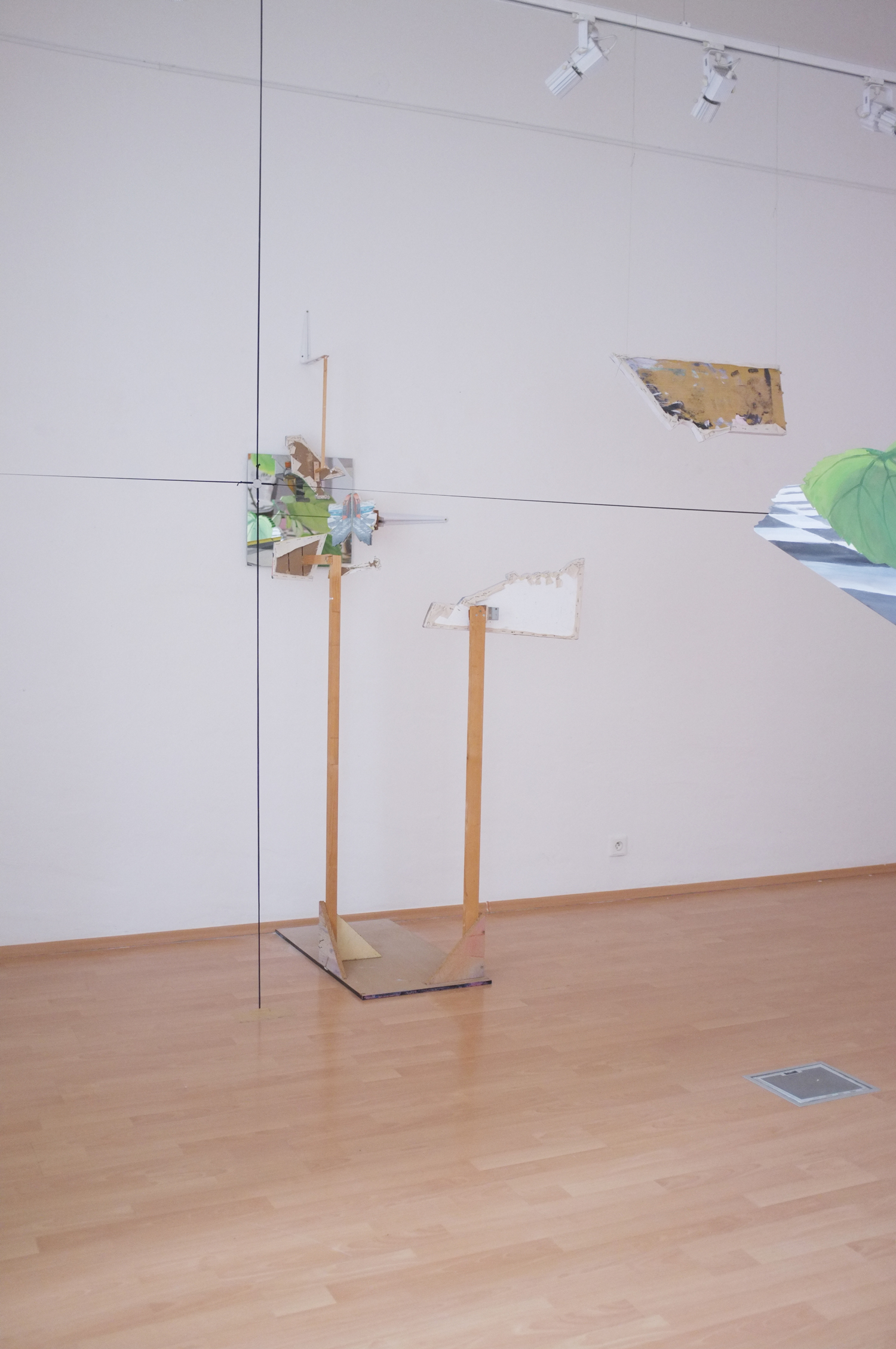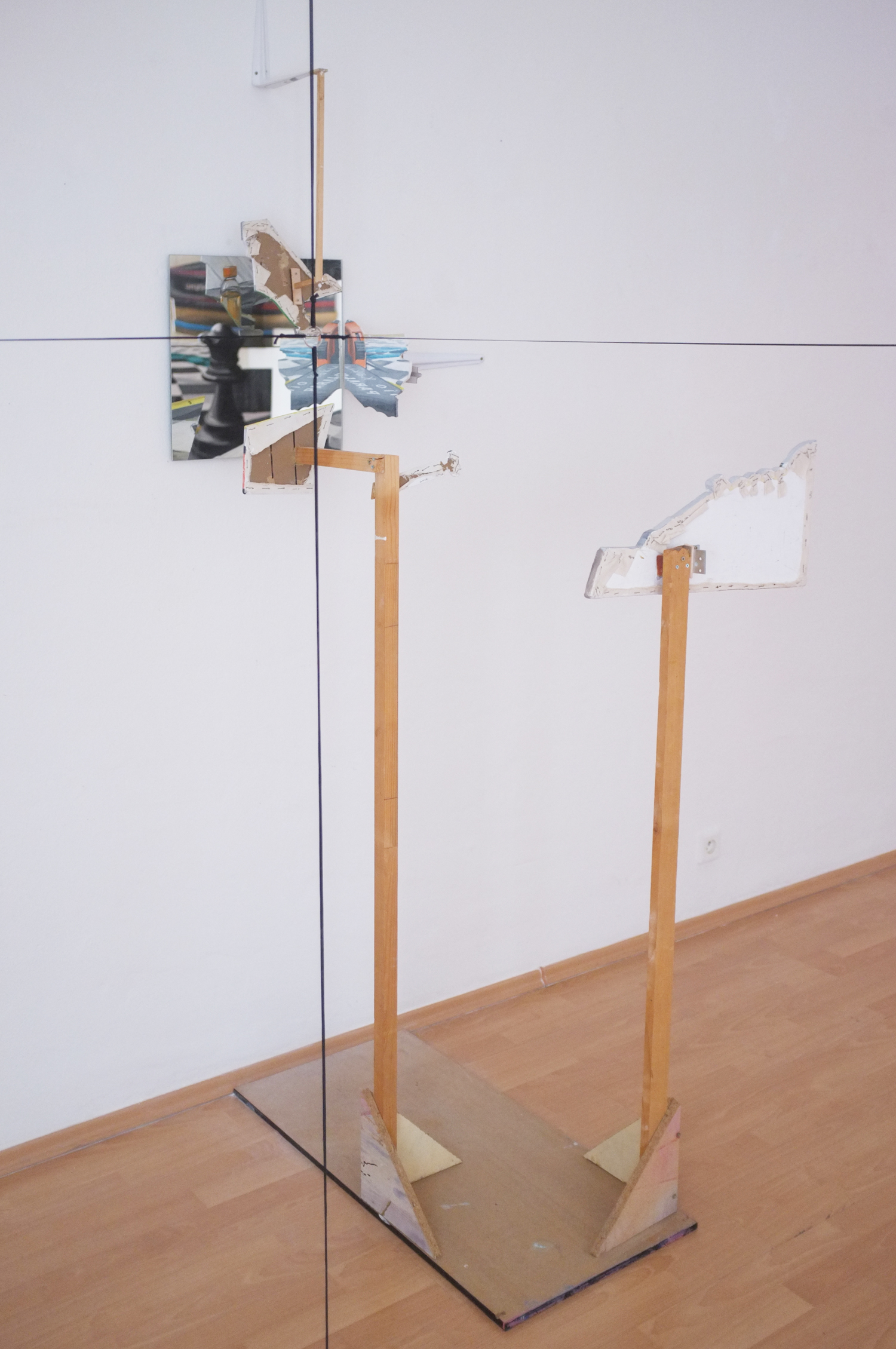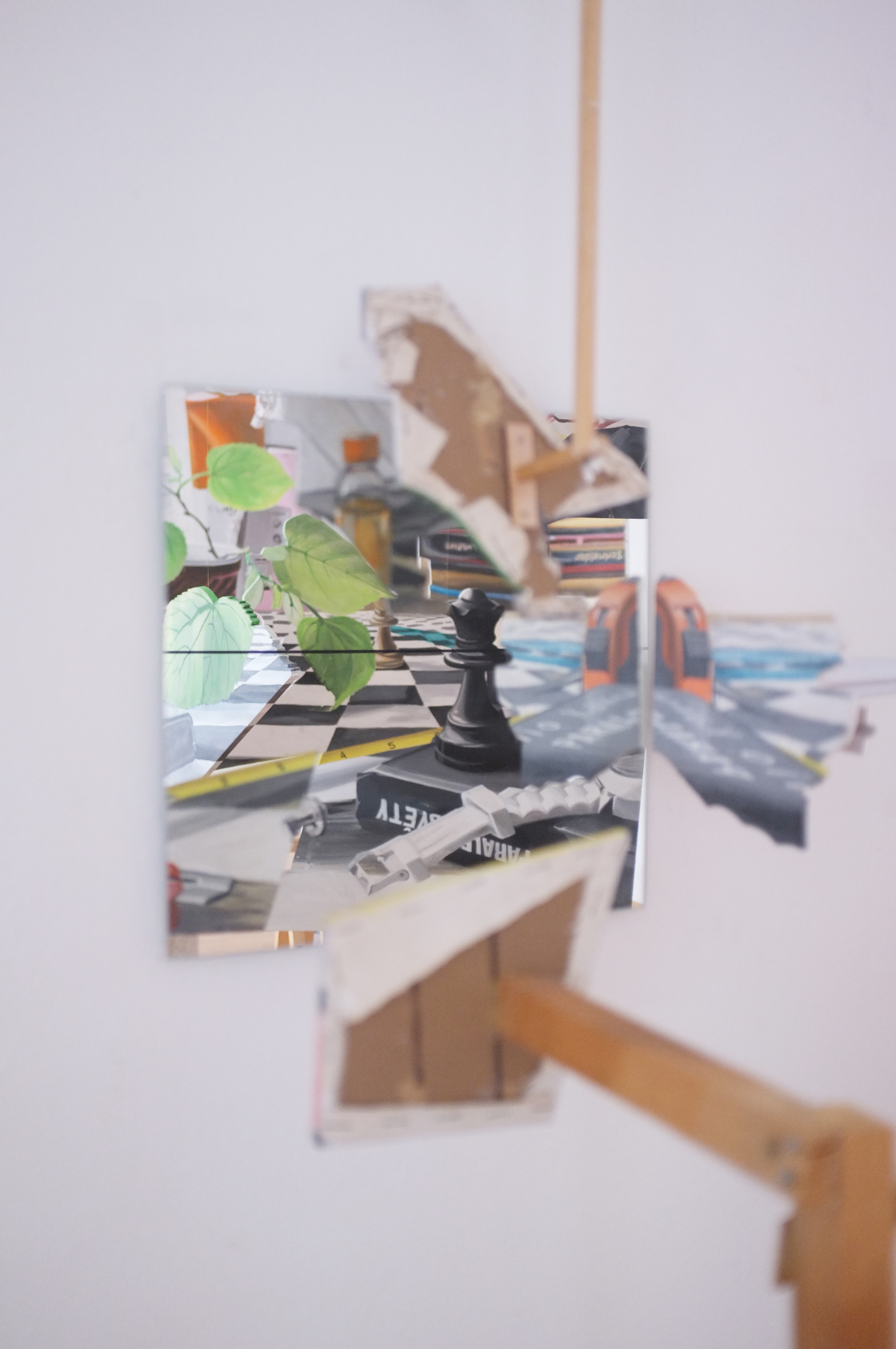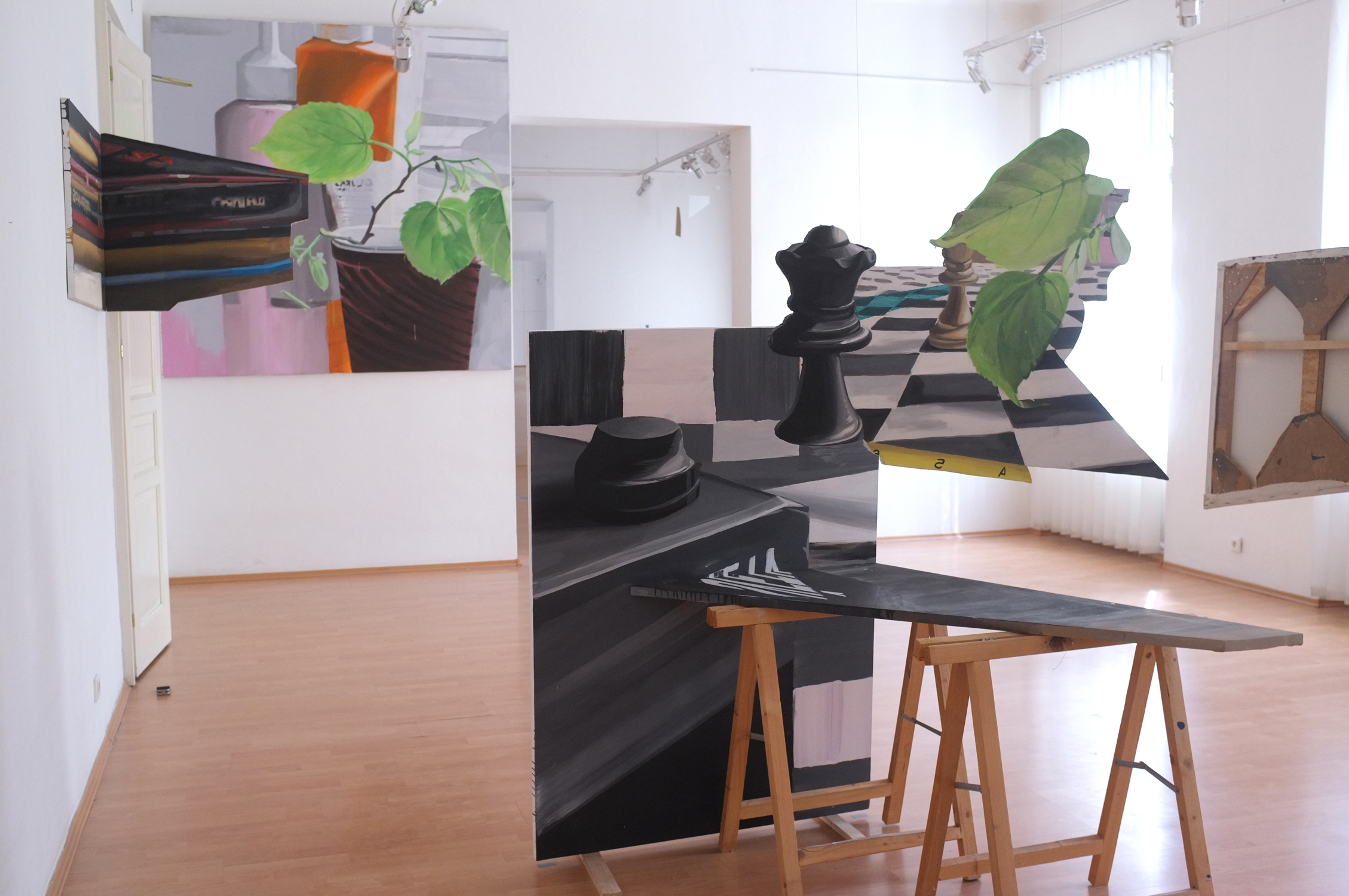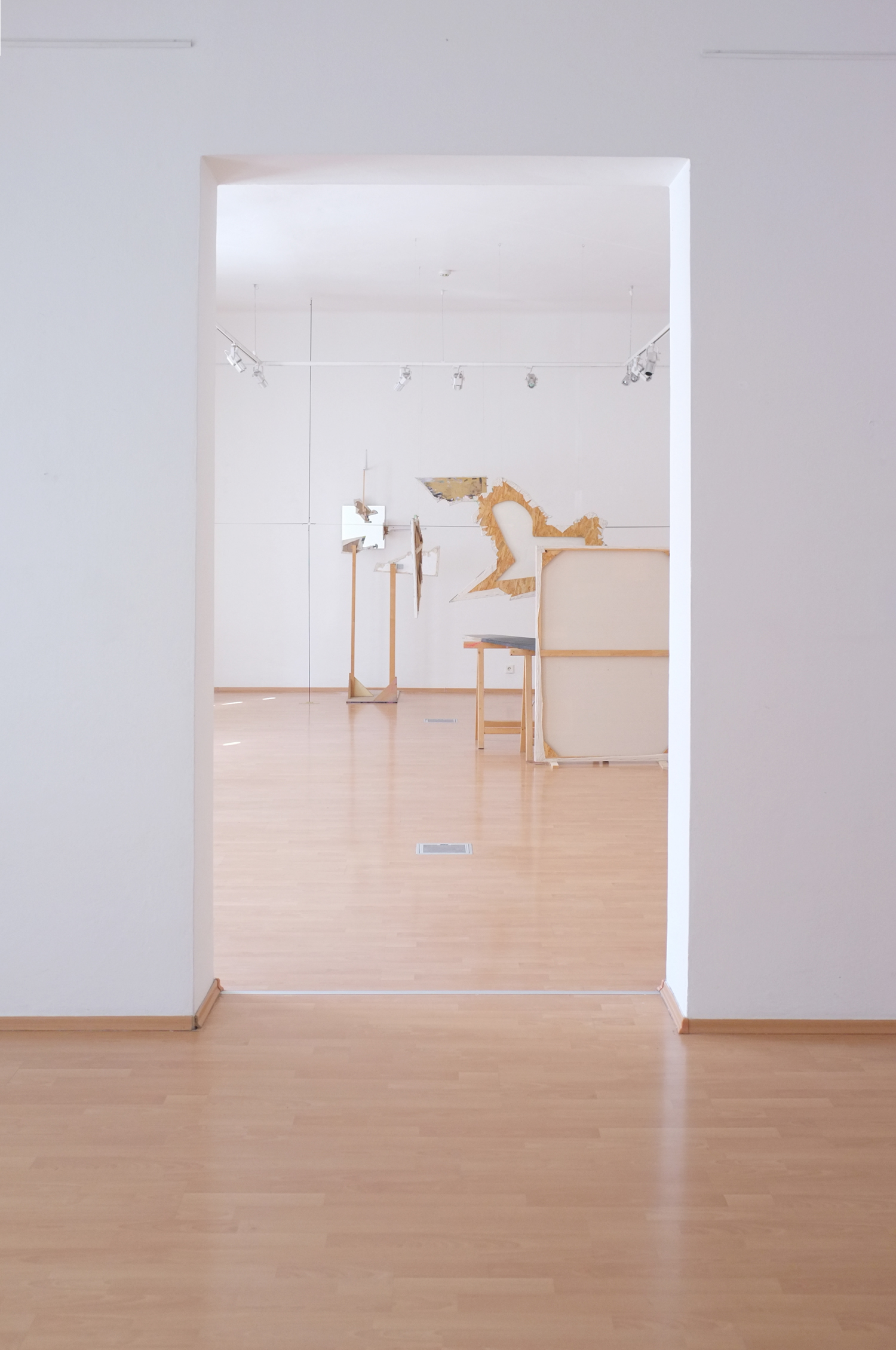Installation, acrylic on canvas, mirror, ring, stands, 440 x 340 x 890 cm, 2012
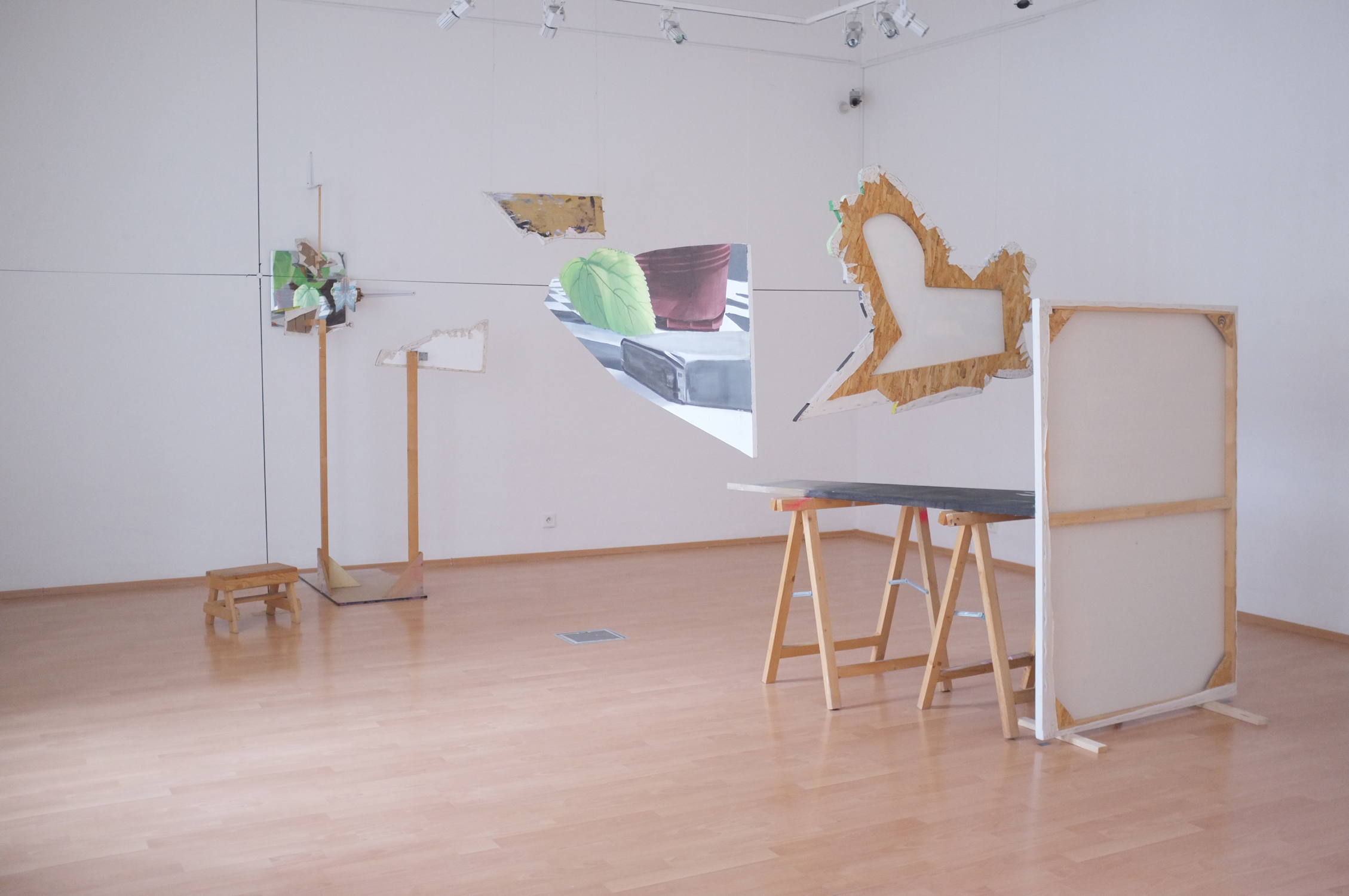
Diploma work – What is the Nature of Reality, part 1
The most important discovery of modern science expressed R. Feynman by sentence: “The world is composed of atoms.” The second most significant science discovery is that physical laws are based on symmetry. The ancient Greeks regarded a specific object, or architecture as symmetric if it contained the certain part, which was contained in the dimensions of the other parts of in integer multiple. The searching for the perfection of the nature passed from looking for perfect shapes to the finding of symmetry of natural laws. The symmetry of laws means, when we observe the natural phenomena from different perspectives we always find out the same rules.
One of the reasons the symmetry became a starting point for my artistic research is that it appears as one of the most reliable guide lines for understanding all the things which seem to be ungraspable. It is a principle which spans the gap between science and art, between psychology and mathematics. Symmetry is in the Pythagoras’ Theorem, in the Fibonacci’s sequence, in the Group theory, in the Rorschach’s inkblot test, as well as in the proportions of ancient architecture, in Botticelli’s Venus, or in Persian carpets.
Mirror symmetry is one of the most basic types of symmetry. This symmetry cannot be naturally created by turning the object in space. Right glove will never be the left. You couldn’t deny it, even if you tried with both hands. Despite the fact that the laws of physics are almost completely mirror-symmetrical – each molecule potential exists in two distinct forms: right- and left-handed. Therefore, why are we not behind a mirror but in front of it? Are we looking at an untouchable image in a space behind the wall, or the paintings are not designed for our point of view? .
Mario Livio writes: “Symmetries, underlying the natural laws, instead of focusing on the external form, focus on the question, which operations can be done with the world around us, that they will not changed the laws that describe all observed phenomena.” If our world is deterministic, why it seems to be managed by coincidence so often? A turning point in our way of looking at the order and disorder (predictability and randomness) – brings the chaos.
An installation of levitating painting canvases unusual shaped. When the viewer looks into (behind) the mirror placing on the wall, he/she can discover the chess still-life with perfect perspective (behind) in the mirror.
See PART 2.
* Title taken from Lewis Carroll’s book Alice’s Adventures in Wonderland (1865). Slovak title translation: To nepoprieš,
ani keby si to skúšala oboma rukami (Alica v krajine zázrakov, preklad: Juraj Vojtek, Viera Vojtková, 2010)
